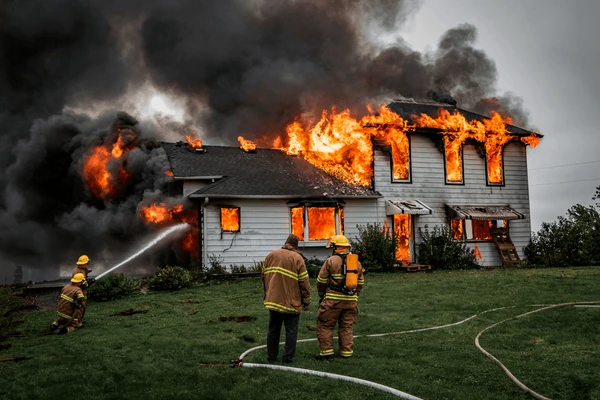The Smokehouse Creek Fire, which started near Stinnett, Texas, is the largest recorded wildfire in Texas history. It scorched more than a million acres, destroyed homes, took lives, and left thousands scrambling for safety, power, and answers.
The Smokehouse Creek Fire has already displaced thousands and destroyed more than 500 structures. If you’re reading this because you’ve been affected, you’re not alone, and what you do next matters. A Smokehouse Creek wildfire lawyer can help you navigate the situation and decide on the best next steps moving forward.
Step One: Get Yourself and Your Loved Ones to Safety
The fire may have fizzled out, but there are still potential threats in the area, and you need to ensure everyone is safe and accounted for, including yourself, your kids, and your pets.
The Red Cross has disaster teams in Texas providing emergency supplies, cleanup kits, meals, and shelter support.
Step Two: Document the Damage (Even If You Haven’t Been Back Yet)
Before any cleanup or repair begins, you have to document everything. If it’s safe and you can access your property. Take photos and videos of every visible damage, from roofs to furniture to the inside of closets.
You should focus on structural damage, smoke stains, and anything destroyed. And don’t forget to record every damaged item with date-stamped evidence.
Even if your home didn’t burn down completely, smoke damage can make a place unlivable, and this is often covered by insurance, too.
Step Three: Contact Your Insurance Provider Immediately
Whether you’re a homeowner, renter, or business owner, you have to notify all relevant insurers right away. This includes:
- Homeowners’ or renters’ insurance
- Business insurance if your business were affected
- Auto insurance if your car was damaged
- Umbrella policy, if you have one
Give them all the documentation you have. Ask for a copy of your policy and carefully review what’s covered, including temporary housing, smoke damage, and lost belongings.
If you’re being denied, remember: initial denial isn’t always final. Many claims are denied multiple times before being approved. You may need legal help to push through.
Step Four: Don’t Skip the Mortgage or Lease Communication
If you own your home, call your mortgage company and explain your situation. Some lenders can pause payments temporarily or offer disaster relief for homeowners.
If you rent, make sure to contact your landlord. Their insurance might cover temporary housing for you or offer rent abatement (which means you don’t pay rent for now).
Some landlords will even cancel your lease to avoid charging you for a place you can’t live in.
Step Five: Secure Your Property (But Don’t Make Permanent Fixes Yet)
If your property is partially damaged and you’re allowed back in:
- Cover broken windows with a tarp or plywood.
- Patch holes in roofs or walls temporarily to prevent water damage.
- Do not begin full repairs until an insurance adjuster inspects your property. Doing so could mess up your claim.
Also, remove perishables or anything that could attract pests or mold. If it’s unsafe, don’t go alone. Bring someone and document everything.
Step Six: Use Disaster Relief Programs Immediately
There are resources beyond insurance that you shouldn’t overlook. Programs like the Federal Emergency Management Agency (FEMA) can help with temporary housing, medical costs, and more. Call for emergency support resources, including shelters, local aid, or assistance with essentials.
The Red Cross is also distributing items like:
- Dust masks, gloves, and cleanup kits
- Rakes, tarps, trash bags, and shovels
- Water, meals, and hygiene supplies
If you’re struggling mentally or emotionally (which is common after fires), reach out to support groups or a mental health professional. Kids, especially, can be affected long after the fire is out.

